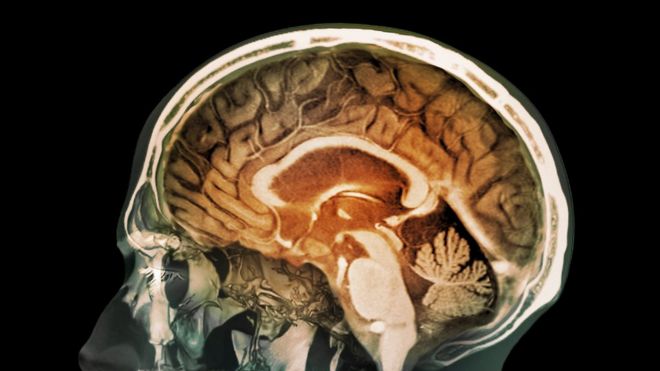
Symptoms of Living
Joy and Gratitude
Friday, November 11, 2016
Qualities of a thoughtful life.
Requires NO Talent:
Kindness
Gratitude
Generosity
Effort
Grit
Optimism
Being on Time
Hard Work
Preparing
Humility
Empathy
Sharing
Honesty






Trump is President:
11/9 always regret
#Election Night

“To be hopeful in bad times is not just foolishly romantic.
It is based on the fact that human history is a history not only of cruelty, but also of compassion, sacrifice, courage, kindness.
What we choose to emphasize in this complex history will determine our lives.
If we see only the worst, it destroys our capacity to do something,
If we remember those times and places — and there are so many — where people have behaved magnificently, this gives us the energy to act, and at least the possibility of sending this spinning top of a world in a different direction.
And if we do act, in however a small way, we don’t have to wait for some grand utopian future.
The future is an infinite succession of presents, and to live now as we think human beings should live, in defiance of all that is bad around us, is itself a marvelous victory.”

Kindness
Gratitude
Generosity
Effort
Grit
Optimism
Being on Time
Hard Work
Preparing
Humility
Empathy
Sharing
Honesty
"Always do Right.
This will Gratify some People
and Astonish the Rest." -
Mark Twain
#ArtOfTheShave #Shave #SantaMonica #Barbershop

“Perhaps all anxiety might derive from a fixation on moments — an inability to accept life as ongoing.” https://www.brainpickings.org/2015/03/31/ongoingness-sarah-manguso/ …

Against Self-Criticism – fantastic read on the Stockholm syndrome of the psyche https://www.brainpickings.org/2016/05/23/against-self-criticism-adam-phillips-unforbidden-pleasures/ …

How to disagree—Amin Maalouf on the key to intelligent dissent and effective criticism, so rare and necessary today https://www.brainpickings.org/2015/10/09/amin-maalouf-identity-criticism/ …
Stress and the social self—a pioneering immunologist on the science of how relationships affect our immune system https://www.brainpickings.org/2015/10/07/esther-sternberg-stress-relationships/ …



Trump is President:
9/11 never forget
Intensity is the price of excellence
“To be hopeful in bad times is not just foolishly romantic.
It is based on the fact that human history is a history not only of cruelty, but also of compassion, sacrifice, courage, kindness.
What we choose to emphasize in this complex history will determine our lives.
If we see only the worst, it destroys our capacity to do something,
If we remember those times and places — and there are so many — where people have behaved magnificently, this gives us the energy to act, and at least the possibility of sending this spinning top of a world in a different direction.
And if we do act, in however a small way, we don’t have to wait for some grand utopian future.
The future is an infinite succession of presents, and to live now as we think human beings should live, in defiance of all that is bad around us, is itself a marvelous victory.”
Howard Zinn
http://www.mindful.org/now-what/
http://www.mindful.org/now-what/
Your story is a canary.
If your story is unclear, people (investors, reporters, recruits) assume your strategy is also a mess.
Thursday, November 10, 2016
Robert Schumann - Piano Quintet, Op.44 (Grimaud, Capuçon, Shoji, Tomte, ...
Robert Schumann - Piano Quintet, Op.44 (Grimaud,
Capuçon, Shoji, Tomte, Maisky)
Robert Schumann - Piano Quintet, Op.44
0:40 I. Allegro brillante
9:23 II. In modo d'una marcia
18:07 III. Scherzo
22:39 IV. Finale
Watch the full concert: https://www.youtube.com/watch?v=aXvZV...
0:40 I. Allegro brillante
9:23 II. In modo d'una marcia
18:07 III. Scherzo
22:39 IV. Finale
Watch the full concert: https://www.youtube.com/watch?v=aXvZV...
-
Category Music
-
License: Standard YouTube License
-
Created using YouTube Video Editor
-
Source videos View attributions
Saturday, November 5, 2016
Dust mites: Cause of so many people's allergies.

Dust mites: bane of my existence. Cause of so many people's allergies.
Scientists just completed a census of the creepy crawlies that live in our homes
Do you know the bugs that share your home?
No? Well, pull up a chair and get acquainted. Researchers from North Carolina State University and the University of Colorado Boulder just completed a census of creepy crawlies from hundreds of households across the country and found that creatures from more than 600 genera of arthropods live alongside us in our homes.
Arthropods, a phylum of invertebrate animals with exoskeletons and segmented bodies, include insects, spiders, crustaceans and all manner of other many-legged critters — most of whom you probably wouldn't want to get up close and personal with right before dinner.
But the reality is that you already are on intimate terms with these creatures. They reflect your environment and affect your health, even if you don't notice them.
Distribution of dust mites detected in door trim dust inside homes across the United States (purple) compared with the range where they are predicted to be most abundant (tan).
(Anne A. Madden)
“There are a whole bunch of different arthropods that we may not think about being part of our natural environment in the home but they’re there,” said biologist Anne Madden, the lead author of a report on the census published in the journal Molecular Ecology. “They're our present, but often-ignored roommates.”
Madden and her colleagues solicited samples from more than 700 houses in all 48 contiguous states. Each contributor needed to provide only a tiny amount of dust — one swab from inside the house, another from outside. Each sample could fit on the head of a Q-Tip.
But contained within those swatches of dust was a world of knowledge. After all, dust isn't just dust: It's microscopic detritus of the ecosystem that is your home. It's got bits of bug leg and moth wing scales, flakes of your skin and dander from your pets, bits of feces from inhabitants large and small (hope you weren't still eating breakfast). By sequencing the DNA of the organic material in each sample, Madden could conduct a genetic census of the creatures in that household.
For
this study, she focused on the arthropods. She was specifically
interested in analyzing the diversity of bugs — the variety of standard
and surprising creatures live among us. Some households she examined
had representatives from as many as 45 genera. (Note that diversity is
different from abundance: Just because these houses had a wide
assortment of bugs doesn't mean they were overrun with insects.)
These results allowed the researchers to understand the complex interactions that take place unnoticed at our feet and within our walls. For example, many samples contained DNA from tiny plant-eating aphids, ladybugs that eat them, and parasitic wasps that lay their eggs in aphids.
“We're seeing entire food webs,” Madden said. “Parasitoids, predators and prey all existing in dust.”
She and her colleagues also began to pick out some trends in the distribution of arthropods and the kinds of homes they like to live in. Roaches tended to stay in warm, southern climates, whereas ladybugs were more plentiful in northern homes. Dust mites like humidity. Houses with pets tended to have more diverse bugs, as did ones with basements.
This data could help clinicians working to understand things such as allergies, according to Madden. It's known that dust mites are a common cause of asthma, as is cockroach waste. “It's good to think about what unexpected arthropods we might be interacting with to figure out how they might be affecting our health in the future,” Madden said.
Some of our bugs may make our homes better without us noticing — spiders that eat other pests, for example. Some might be accidental intruders, tracked in on a sleeve or a dog's paw and as eager to escape the carpeted confines of our homes as we are to have kick them out. Still others may carry out their entire existences right next to us, without us ever noticing
“It’s fun to reveal the mysteries that we didn’t even know were mysteries,” Madden said. “We think of our houses as our most well known and intimate habitats, and yet we still have so much to learn about what's going on inside of them.”
No? Well, pull up a chair and get acquainted. Researchers from North Carolina State University and the University of Colorado Boulder just completed a census of creepy crawlies from hundreds of households across the country and found that creatures from more than 600 genera of arthropods live alongside us in our homes.
Arthropods, a phylum of invertebrate animals with exoskeletons and segmented bodies, include insects, spiders, crustaceans and all manner of other many-legged critters — most of whom you probably wouldn't want to get up close and personal with right before dinner.
But the reality is that you already are on intimate terms with these creatures. They reflect your environment and affect your health, even if you don't notice them.
Distribution of dust mites detected in door trim dust inside homes across the United States (purple) compared with the range where they are predicted to be most abundant (tan).
(Anne A. Madden)
“There are a whole bunch of different arthropods that we may not think about being part of our natural environment in the home but they’re there,” said biologist Anne Madden, the lead author of a report on the census published in the journal Molecular Ecology. “They're our present, but often-ignored roommates.”
Madden and her colleagues solicited samples from more than 700 houses in all 48 contiguous states. Each contributor needed to provide only a tiny amount of dust — one swab from inside the house, another from outside. Each sample could fit on the head of a Q-Tip.
But contained within those swatches of dust was a world of knowledge. After all, dust isn't just dust: It's microscopic detritus of the ecosystem that is your home. It's got bits of bug leg and moth wing scales, flakes of your skin and dander from your pets, bits of feces from inhabitants large and small (hope you weren't still eating breakfast). By sequencing the DNA of the organic material in each sample, Madden could conduct a genetic census of the creatures in that household.
These results allowed the researchers to understand the complex interactions that take place unnoticed at our feet and within our walls. For example, many samples contained DNA from tiny plant-eating aphids, ladybugs that eat them, and parasitic wasps that lay their eggs in aphids.
A
scanning electron micrograph of home dust including arthropod
fragments, spider web silk, pollen, and fibers. (Anne A. Madden
and Robert McGugan/University of Colorado Boulder)
She and her colleagues also began to pick out some trends in the distribution of arthropods and the kinds of homes they like to live in. Roaches tended to stay in warm, southern climates, whereas ladybugs were more plentiful in northern homes. Dust mites like humidity. Houses with pets tended to have more diverse bugs, as did ones with basements.
This data could help clinicians working to understand things such as allergies, according to Madden. It's known that dust mites are a common cause of asthma, as is cockroach waste. “It's good to think about what unexpected arthropods we might be interacting with to figure out how they might be affecting our health in the future,” Madden said.
Some of our bugs may make our homes better without us noticing — spiders that eat other pests, for example. Some might be accidental intruders, tracked in on a sleeve or a dog's paw and as eager to escape the carpeted confines of our homes as we are to have kick them out. Still others may carry out their entire existences right next to us, without us ever noticing
“It’s fun to reveal the mysteries that we didn’t even know were mysteries,” Madden said. “We think of our houses as our most well known and intimate habitats, and yet we still have so much to learn about what's going on inside of them.”
Tuesday, November 1, 2016
Pollution particles 'get into brain'
- 5 September 2016
- From the section Science & Environment
Tiny particles of pollution have been discovered inside samples of brain tissue, according to new research.
Suspected
of toxicity, the particles of iron oxide could conceivably contribute
to diseases like Alzheimer's - though evidence for this is lacking.The finding - described as "dreadfully shocking" by the researchers - raises a host of new questions about the health risks of air pollution.
Many studies have focused on the impact of dirty air on the lungs and heart.
Now this new research provides the first evidence that minute particles of what is called magnetite, which can be derived from pollution, can find their way into the brain.
Earlier this year the World Health Organisation warned that air pollution was leading to as many as three million premature deaths every year.
Tracing origins
The estimate for the UK is that 50,000 people die every year with conditions linked to polluted air.The research was led by scientists at Lancaster University and is published in the Proceedings of the National Academy of Sciences (PNAS).
The team analysed samples of brain tissue from 37 people - 29 who had lived and died in Mexico City, a notorious pollution hotspot, and who were aged from 3 to 85.
The other 8 came from Manchester, were aged 62-92 and some had died with varying severities of neurodegenerative disease.
The lead author of the research paper, Prof Barbara Maher, has previously identified magnetite particles in samples of air gathered beside a busy road in Lancaster and outside a power station.
She suspected that similar particles may be found in the brain samples, and that is what happened.
"It's dreadfully shocking. When you study the tissue you see the particles distributed between the cells and when you do a magnetic extraction there are millions of particles, millions in a single gram of brain tissue - that's a million opportunities to do damage."

Further study revealed that the particles have a distinctive shape which provides a crucial clue to their origin.
Magnetite can occur naturally in the brain in tiny quantities but the particles formed that way are distinctively jagged.
By contrast, the particles found in the study were not only far more numerous but also smooth and rounded - characteristics that can only be created in the high temperatures of a vehicle engine or braking systems.
Prof Maher said: "They are spherical shapes and they have little crystallites around their surfaces, and they occur with other metals like platinum which comes from catalytic converters.
"So for the first time we saw these pollution particles inside the human brain.
"It's a discovery finding. It's a whole new area to investigate to understand if these magnetite particles are causing or accelerating neuro-degenerative disease."
For every one natural magnetite particle identified, the researchers found about 100 of the pollution-derived ones.
The results did not show a straightforward pattern. While the Manchester donors, especially those with neurodegenerative conditions, had elevated levels of magnetite, the same or higher levels were found in the Mexico City victims.
The highest level was found in a 32-year-old Mexican man who had been killed in a traffic accident.
Disease risk?
Dubbed "nanospheres", the particles are less than 200 nanometres in diameter - by comparison, a human hair is at least 50,000 nanometres thick.While large particles of pollution such as soot can be trapped inside the nose, smaller types can enter the lungs and even smaller ones can cross into the bloodstream.
But nanoscale particles of magnetite are believed to be small enough to pass from the nose into the olfactory bulb and then via the nervous system into the frontal cortex of the brain.
Prof David Allsop, a specialist in Alzheimer's and other neurodegenerative diseases, is a co-author of the study and also at Lancaster University.
He said that pollution particles "could be an important risk factor" for these conditions.
"There is no absolutely proven link at the moment but there are lots of suggestive observations - other people have found these pollution particles in the middle of the plaques that accumulate in the brain in Alzheimer's disease so they could well be a contributor to plaque formation.
"These particles are made out of iron and iron is very reactive so it's almost certainly going to do some damage to the brain. It's involved in producing very reactive molecules called reaction oxygen species which produce oxidative damage and that's very well defined.
"We already know oxidative damage contributes to brain damage in Alzheimer's patients so if you've got iron in the brain it's very likely to do some damage. It can't be benign."
Other experts in the field are more cautious about a possible link.
Dr Clare Walton, research manager at the Alzheimer's Society, said there was no strong evidence that magnetite causes Alzheimer's disease or makes it worse.
"This study offers convincing evidence that magnetite from air pollution can get into the brain, but it doesn't tell us what effect this has on brain health or conditions such as Alzheimer's disease," she said.
"The causes of dementia are complex and so far there hasn't been enough research to say whether living in cities and polluted areas raises the risk of dementia. Further work in this area is important, but until we have more information people should not be unduly worried."
She said that in the meantime more practical ways of lowering the chances of developing dementia include regular exercise, eating a healthy diet and avoiding smoking.
Source: http://www.bbc.com/news/science-environment-37276219
LSD helps to treat alcoholism
DEA/Science Faction/Corbis
Nature | News
LSD helps to treat alcoholism
Retrospective analysis shows hallucinogenic drug helped problem drinkers.
An analysis of old studies suggests LSD may have a role to play in treating alcoholism.
The powerful hallucinogen LSD (lysergic acid diethylamide) has potential as a treatment for alcoholism, according to a retrospective analysis of studies published in the late 1960s and early 1970s.
The study1, by neuroscientist Teri Krebs and clinical psychologist Pål-Ørjan Johansen of the Norwegian University of Science and Technology in Trondheim, is the first-ever quantitative meta-analysis of LSD–alcoholism clinical trials. The researchers sifted through thousands of records to collect data from randomized, double-blind trials that compared one dose of LSD to a placebo.
Of 536 participants in six trials, 59% of people receiving LSD reported lower levels of alcohol misuse, compared to 38% of people who received a placebo. “We were surprised that the effect was so clear and consistent,” says Krebs. She says that the problem with most studies done at that time was that there were too few participants, which limited statistical power. “But when you combine the data in a meta-analysis, we have more than 500 patients and there is definitely an effect,” she says. In general, the reported benefits lasted three to six months. Their findings are published today in the Journal of Psychopharmacology.
Psychedelics were promoted by psychiatrists in the 1950s as having a range of medical uses — to treat conditions such as schizophrenia, for example — before political pressures in the United States and elsewhere largely ended the work. “Alcoholism was considered one of the most promising clinical applications for LSD,” says Johansen. Alcoholics Anonymous co-founder Bill Wilson is said to have espoused the benefits of LSD in the book Pass It On: The Story of Bill Wilson and How the AA Message Reached the World.
In the last decade or so, however, a new generation of researchers have been interested in harnessing the therapeutic benefits of illicit drugs — such as 3,4-methylenedioxymethamphetamine (MDMA or ecstasy) for post-traumatic stress disorder, ayahuasca for drug and alcohol dependency, and psilocybin, the active ingredient in hallucinogenic mushrooms, for smoking cessation.
The snow globe of perception?
How psychedelics exert such effects, especially after a single dose, remains unclear. LSD and its chemical cousins share structural similarities with the neurotransmitter serotonin, which is linked to many aspects of mood, memory and pleasure. These psychedelics also bind the same receptor sites in the brain as serotonin, but there the similarity may end — studies have shown that the hallucinogens elicit chemical cascades different from other compounds that bind at the same receptor2. To complicate matters further, LSD also acts at other receptors3.
For the moment, studying human behavioural responses rather than brain chemistry may be more helpful in understanding how the drugs work. Robin Carhart-Harris, a psychopharmacologist at Imperial College London who has researched how psilocybin could treat depression, says that psychedelics must work at both biological and psychological levels. “Psychedelics probably work in addiction by making the brain function more chaotically for a period — a bit like shaking up a snow globe — weakening reinforced brain connections and dynamics,” he says.
Roland Griffiths, a behavioural biologist at the Johns Hopkins University School of Medicine in Baltimore, Maryland, is investigating the influence of psilocybin on smoking cessation, and says that psychedelics sometimes give rise to distinctive, insightful experiences that can produce enduring positive changes in attitude, mood and behaviour.
“This is impressive and important work,” says Matthew Johnson, a psychiatrist also at Johns Hopkins University who is now running a small trial looking at the effectiveness of psilocybin to treat nicotine addiction. “Although this meta-analysis does not replace the need to test the approach in new, well-designed and rigorous clinical trials, it puts some more muscle behind the interpretation that the older literature shows hints that psychedelic therapy might really help addiction.”
However, Ken Checinski, a consultant addiction psychiatrist and independent researcher based in London, says that although the results are exciting, no pharmacological treatment should be seen as a magic bullet and that modern therapeutic techniques have improved. “The included LSD trials pre-date the use of psychological techniques such as motivational interviewing and cognitive behaviour therapy,” he says.
- Nature
- doi:10.1038/nature.2012.10200
Related stories and links
Saturday, June 4, 2016
Monday, May 16, 2016
Fathers drinking: Also responsible for fetal disorders?
Fathers drinking: Also responsible for fetal disorders?
- Date:
- February 14, 2014
- Source:
- Taylor & Francis
- Summary:
- Maternal exposure to alcohol in-utero is a known risk and cause of Fetal Alcohol Syndrome (FAS). FAS children suffer significant problems such as retarded intellect, stunted growth and nervous system abnormalities, social problems and isolation. Until now, fathers have not had a causal link to such disabilities. Ground breaking new research has been revealed which shows dads may have more accountability.
- FULL STORY

The authors believe alcohol consumption affects genes in sperm which are responsible for normal fetal development.
Credit: © Dario Lo Presti / Fotolia
Maternal exposure to alcohol in-utero
is a known risk and cause of Fetal Alcohol Syndrome. FAS children suffer
significant problems such as retarded intellect, stunted growth and
nervous system abnormalities, social problems and isolation. Until now
Fathers have not had a causal link to such disabilities. Ground breaking
new research has been revealed which shows Dads may have more
accountability.
Published in Animal Cells and Systems, researchers
studied male mice exposed to varying concentrations of alcohol and one
control group exposed only to saline. After exposure the mice were mated
and resulting fetuses examined. The findings revealed previously
unknown and riveting evidence that paternal alcohol consumption can
directly affect fetal development.
A number of fetuses sired by males exposed to alcohol suffered abnormal organ development and or brain development. Those in the saline group were normal. So, can developmental abnormalities be predetermined at fertilization? This research proves so. The authors believe alcohol consumption affects genes in sperm which are responsible for normal fetal development.
Until now fathers' lifestyle choices have not seen any repercussion on their unborn children. This ground-breaking research provides the first definitive evidence that fathers' drinking habits pre-conception can cause significant fetal abnormalities.
A number of fetuses sired by males exposed to alcohol suffered abnormal organ development and or brain development. Those in the saline group were normal. So, can developmental abnormalities be predetermined at fertilization? This research proves so. The authors believe alcohol consumption affects genes in sperm which are responsible for normal fetal development.
Until now fathers' lifestyle choices have not seen any repercussion on their unborn children. This ground-breaking research provides the first definitive evidence that fathers' drinking habits pre-conception can cause significant fetal abnormalities.
Story Source:
The above post is reprinted from materials provided by Taylor & Francis. Note: Materials may be edited for content and length.
The above post is reprinted from materials provided by Taylor & Francis. Note: Materials may be edited for content and length.
Journal Reference:
- Hye Jeong Lee, Jae-Sung Ryu, Na Young Choi, Yo Seph Park, Yong Il Kim, Dong Wook Han, Kisung Ko, Chan Young Shin, Han Sung Hwang, Kyung-Sun Kang, Kinarm Ko. Transgenerational effects of paternal alcohol exposure in mouse offspring. Animal Cells and Systems, 2013; 17 (6): 429 DOI: 10.1080/19768354.2013.865675
Link: https://www.sciencedaily.com/releases/2014/02/140214075405.htm
Wednesday, May 11, 2016
Medical pot patients can grow their own weed
Medical pot patients can grow their own weed after federal court gives feds six months to regulate

Jonathan Hayward / The Canadian PressMarijuana is weighed at a medical marijuana dispensary, in Vancouver, Wednesday, Feb. 5, 2015.
VANCOUVER — A Federal Court judge has ruled that medical marijuana patients have the right to grow their own cannabis.
 Judge Michael Phelan struck down federal legislation introduced by
the previous Conservative government that barred patients from growing
their own plants and required them to buy from licensed producers.
Judge Michael Phelan struck down federal legislation introduced by
the previous Conservative government that barred patients from growing
their own plants and required them to buy from licensed producers.
He is suspending the decision to strike down the law for six months, allowing the federal Liberal government time to create a new medical marijuana regime.
Phelan also extended the injunction that allowed people who held licences to grow their own marijuana to continue until a further court order.
The constitutional challenge was launched by four British Columbia residents who argued that legislation introduced by the previous Conservative government violated their charter rights.
The Marijuana for Medical Purposes Regulations were introduced in 2013 and required patients to buy cannabis from licensed producers instead of growing their own.
An injunction has allowed those who already held licences to continue growing marijuana until the Federal Court decision, which is set to have national impact on medical cannabis users and the new Liberal government.
The Liberals have committed to regulating and legalizing recreational marijuana but have said little about their plans for medical marijuana since being elected.
Phelan heard the case between February and May 2015 in Vancouver’s Federal Court.
Federal government lawyers argued that the new regime ensures patients have a supply of safe medical marijuana while protecting the public from the potential ills of grow-operations in patients’ homes.
But the lead counsel for the plaintiffs, John Conroy, told court that the legislation has robbed patients of affordable access to medicine. Some people were left with no choice but to run afoul of the law, he argued, either by continuing to grow their own or by purchasing on the black market.

THE CANADIAN PRESS/Adrian WyldA man lights a marijuana joint as he participates in the 4/20 protest on Parliament Hill in Ottawa, April 20, 2015.
He is suspending the decision to strike down the law for six months, allowing the federal Liberal government time to create a new medical marijuana regime.
Phelan also extended the injunction that allowed people who held licences to grow their own marijuana to continue until a further court order.
The constitutional challenge was launched by four British Columbia residents who argued that legislation introduced by the previous Conservative government violated their charter rights.
The Marijuana for Medical Purposes Regulations were introduced in 2013 and required patients to buy cannabis from licensed producers instead of growing their own.
An injunction has allowed those who already held licences to continue growing marijuana until the Federal Court decision, which is set to have national impact on medical cannabis users and the new Liberal government.
The Liberals have committed to regulating and legalizing recreational marijuana but have said little about their plans for medical marijuana since being elected.
Federal government lawyers argued that the new regime ensures patients have a supply of safe medical marijuana while protecting the public from the potential ills of grow-operations in patients’ homes.
But the lead counsel for the plaintiffs, John Conroy, told court that the legislation has robbed patients of affordable access to medicine. Some people were left with no choice but to run afoul of the law, he argued, either by continuing to grow their own or by purchasing on the black market.
Dietary Guidelines for Americans
Dietary Guidelines for Americans
Karen B. DeSalvo, MD, MPH, MSc1; Richard Olson, MD, MPH1; Kellie O. Casavale, PhD, RD1
[+] Author Affiliations
JAMA. 2016;315(5):457-458. doi:10.1001/jama.2015.18396.
Article
References
The US Departments of Health and Human Services (DHHS) and Agriculture (USDA) have released the eighth edition (2015-2020) of the Dietary Guidelines for Americans.1 The Dietary Guidelines are an important part of a complex and multifaceted solution to promoting health and preventing diet-related chronic diseases including cardiovascular disease, type 2 diabetes, some cancers, and obesity. The Dietary Guidelines are required under the National Nutrition Monitoring and Related Research Act of 1990 and inform the development of federal food, nutrition, and health policies and programs. They serve as the evidence-based foundation for federal government nutrition education materials and are used to inform programs like Older Americans Act Nutrition Services Programs and the Supplemental Nutrition Assistance Program (SNAP) that affect millions of people each day. The Dietary Guidelines can also be adapted by health care professionals to describe and recommend healthy eating to patients. Recent studies have shown that diets that align closely with the Dietary Guidelines are associated with a significant reduction in the onset of and deaths due to diet-related chronic diseases.2,3
To update the Dietary Guidelines, as required by law, the Secretaries of the DHHS and the USDA formed an external Dietary Guidelines Advisory Committee made up of prestigious researchers and scientists in the fields of nutrition, health, and medicine. The 2015 advisory committee was charged with reviewing the 2010 Dietary Guidelines to determine topics for which new scientific evidence is likely available and to review that evidence to inform the development of the 2015-2020 edition. The committee used 4 approaches to review the available evidence: original systematic reviews; existing systematic reviews, meta-analyses, and reports by federal agencies or leading scientific organizations; data analyses; and food pattern modeling analyses. The work of the committee was submitted to the DHHS and USDA in the scientific report of the 2015 Dietary Guidelines Advisory Committee and made available for public comment. In addition to the committee report, the DHHS and USDA obtained input from federal nutrition and medical experts and comments from the public to develop the 2015-2020 Dietary Guidelines.
Although many of the recommendations have remained relatively consistent over time, the Dietary Guidelines have evolved with scientific knowledge. For example, recent research has examined the relationship between overall eating patterns and health. Consequently, eating patterns are a main focus of the 2015-2020 Dietary Guidelines. For most individuals, achieving a healthy eating pattern may require adjustments in food and beverage choices because at the population level, Americans are not following healthy eating patterns. The current guidelines focus on shifts in eating patterns to align current dietary intake with their recommendations and highlight multiple strategies across all segments of society to promote healthy eating and physical activity behaviors.
DIETARY COMPONENTS OF PUBLIC HEALTH CONCERN
The 2015-2020 Dietary Guidelines contain 5 overarching goals and 13 key recommendations (Box).
Box.
Guidelines and Supporting Key Recommendations of the 2015-2020 Dietary Guidelines for Americans
Guidelines (Abbreviated)
Follow a healthy eating pattern across the life span.
Focus on variety, nutrient density, and amount.
Limit calories from added sugars and saturated fats and reduce sodium intake.
Shift to healthier food and beverage choices.
Support healthy eating patterns for all.
Key Recommendations
Follow a healthy eating pattern that accounts for all foods and beverages within an appropriate calorie level. A healthy eating pattern includes
A variety of vegetables from all of the subgroups—dark green, red and orange, legumes (beans and peas), starchy, and other
Fruits, especially whole fruits
Grains, at least half of which are whole grains
Fat-free or low-fat dairy, including milk, yogurt, cheese, and fortified soy beverages
A variety of protein foods, including seafood, lean meats and poultry, eggs, legumes (beans and peas), and nuts, seeds, and soy products
Oils
A healthy eating pattern limits saturated fats and trans fats, added sugars, and sodium.
Key recommendations that are quantitative are provided for several components of the diet of particular public health concern that should be limited.
Consume less than 10% of calories per day from added sugars.
Consume less than 10% of calories per day from saturated fats.
Consume less than 2300 mg/d of sodium.
If alcohol is consumed, it should be consumed in moderation—up to 1 drink per day for women and up to 2 drinks per day for men—and only by adults of legal drinking age.
The Dietary Guidelines also include a key recommendation to meet the Physical Activity Guidelines for Americans.4
Below is a brief summary of guidance for calories from added sugars and saturated fats, dietary cholesterol, and sodium. Additional information can be found at http://www.health.gov/DietaryGuidelines.1
Calories From Added Sugars
When sugars are added to foods and beverages, they add calories without contributing essential nutrients. The recommendation to limit added sugars to less than 10% of calories per day is a target to help the public achieve a healthy eating pattern—meeting nutrient and food group needs through nutrient-dense food and beverage choices while staying within calorie limits. This target is also informed by national data indicating that added sugars currently account for more than 13% of total calories consumed by the US population.5
Calories From Saturated Fats and Intake of Dietary Cholesterol
Intake of saturated fats should be limited to less than 10% of calories per day. Strong and consistent evidence shows that replacing saturated fats with polyunsaturated fats is associated with a reduced risk of cardiovascular disease events and deaths. The key recommendation from the 2010 Dietary Guidelines to limit consumption of dietary cholesterol to 300 mg/d is not included in the 2015 edition because adequate evidence is not available for a quantitative limit specific to the Dietary Guidelines. However, this change does not suggest that dietary cholesterol is no longer important to consider. In general, foods that are higher in dietary cholesterol, such as butter and sausage, also tend to be higher in saturated fats. Examples of healthy eating patterns in the Dietary Guidelines limit dietary cholesterol to a range of 100 to 300 mg/d.
Sodium
The scientific consensus from expert bodies, such as the Institute of Medicine,6 the American Heart Association, and Dietary Guidelines Advisory Committees, is that the average sodium intake among Americans aged 1 year or older, currently 3440 mg/d, is too high and should be reduced. Healthy eating patterns limit sodium to less than 2300 mg/d for adults and children aged 14 years or older and to the age- and sex-appropriate Tolerable Upper Intake Levels7 of sodium for children younger than 14 years. This recommendation is based on evidence showing a linear dose-response relationship between increased sodium intake and increased blood pressure in adults. Direct evidence for the association between sodium intake and risk of cardiovascular disease in adults is not as consistent as the evidence for blood pressure.
CONCLUSIONS
Everyone has a role in supporting healthy eating patterns. Concerted efforts among health care professionals, communities, businesses and industries, organizations, governments, and other segments of society are important to support individuals and families in making dietary and physical activity choices that align with the Dietary Guidelines and work for them. Health care professionals can help individuals identify how they can modify and improve their dietary patterns and intake to align with the Dietary Guidelines. Educational materials for both professionals and consumers will be available in 2016.
ARTICLE INFORMATION
Corresponding Author: Karen B. DeSalvo, MD, MPH, MSc, Office of the Assistant Secretary for Health, US Department of Health and Human Services, 200 Independence Ave SW, Washington, DC 20201 (karen.desalvo@hhs.gov).
Published Online: January 7, 2016. doi:10.1001/jama.2015.18396.
Conflict of Interest Disclosures: All authors have completed and submitted the ICMJE Form for Disclosure of Potential Conflicts of Interest and none were reported.
REFERENCES
1
US Department of Health and Human Services; US Department of Agriculture. 2015-2020 Dietary Guidelines for Americans. 8th ed. Washington, DC: US Dept of Health and Human Services; December 2015. http://www.health.gov/DietaryGuidelines. Accessed December 16, 2015.
2
Schwingshackl L, Hoffmann G. Diet quality as assessed by the Healthy Eating Index, the Alternate Healthy Eating Index, the Dietary Approaches to Stop Hypertension score, and health outcomes: a systematic review and meta-analysis of cohort studies . J Acad Nutr Diet. 2015;115(5):780-800.e5.
PubMed | Link to Article
3
Wang DD, Li Y, Chiuve SE, Hu FB, Willett WC. Improvements in US diet helped reduce disease burden and lower premature deaths, 1999-2012; overall diet remains poor . Health Aff (Millwood). 2015;34(11):1916-1922.
PubMed | Link to Article
4
US Department of Health and Human Services. 2008 Physical Activity Guidelines for Americans. Washington, DC: US Dept of Health and Human Services; 2008. ODPHP publication U0036.
5
US Department of Health and Human Services; US Department of Agriculture. Scientific Report of the 2015 Dietary Guidelines Advisory Committee. Part D. Washington, DC: US Dept of Health and Human Services; February 2015:chap 6. http://health.gov/dietaryguidelines/2015-scientific-report. Accessed December 23, 2015.
6
Institute of Medicine. Sodium Intake in Populations: Assessment of Evidence. Washington, DC: National Academies Press; 2013.
7
Institute of Medicine. Dietary Reference Intakes for Water, Potassium, Sodium, Chloride, and Sulfate. Washington, DC: National Academies Press; 2005.
JAMA Patient Page
Dietary Guidelines for Americans
JAMA. 2016;315(5):528. doi:10.1001/jama.2016.0077.
Related Multimedia
Author Interview
Dietary Guidelines for Americans (06:28)

Articles Related By Topic
New Dietary Guidelines Place Added Sugars in the Crosshairs
JAMA. 2016;315(14):1440-1441. doi:10.1001/jama.2016.1321.
From JAMA’s Daily News Site
JAMA. 2014;311(17):1721. doi:10.1001/jama.2014.4252.
Related Collections
Guidelines
Nutrition
Public and Environmental Health
Subscribe to:
Posts (Atom)







